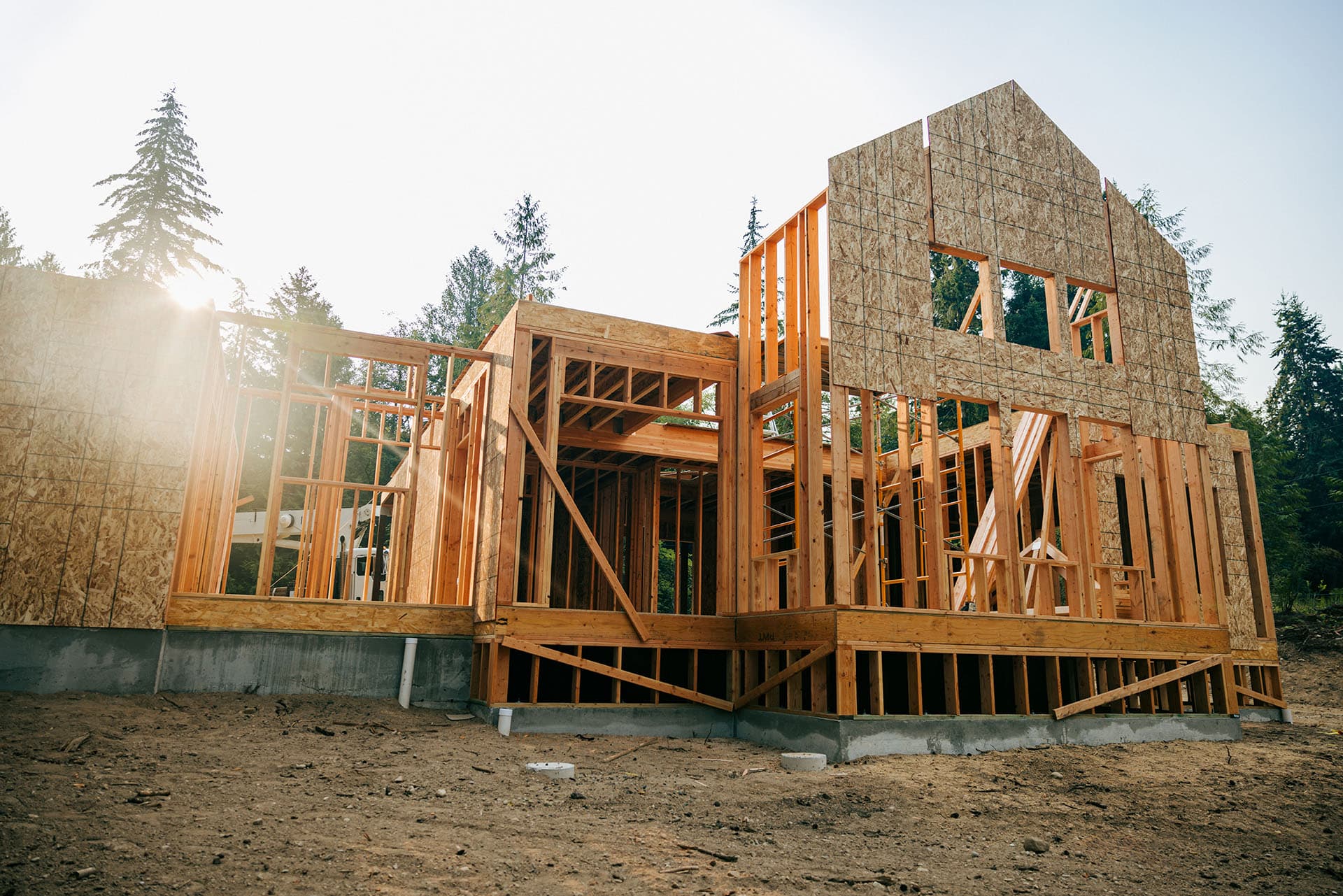The unintended consequences of Canada’s rising housing costs and delays
Altus Group’s Peter Norman testified before a Canadian Senate subcommittee on how housing costs, fees, and delays are driving the nation’s housing crisis.

Key highlights:
In 2024, development approvals in Canada averaged nearly a year (11.6 months), adding significant carrying and financing costs that deter new housing investment
Municipal fees on new homes vary by more than tenfold between cities, with single-family charges ranging from under $10,000 to nearly $200,000, directly impacting affordability
A growing stack of regulatory requirements, from environmental reviews to technical studies, has become a hidden cost driver across markets
New home sales have fallen by about 90% since 2021, putting roughly 87,500 construction and related jobs at risk
Repurposing obsolete office buildings offers potential relief for both the office and housing markets, but progress remains constrained by municipal resistance
In testimony before the Canadian Senate’s Standing Committee on Banking, Commerce and the Economy, Peter Norman, Vice President and Economic Strategist at Altus Group, outlined a pressing issue facing Canada today: the structural costs embedded in new housing.
Drawing on decades of housing market data, including proprietary Altus Group’s Canadian data, development feasibility work, and municipal policy analysis, Norman emphasized that Canada’s housing crisis is not simply about demand overwhelming supply, but rather about the time, costs, and cumulative regulatory burdens that make it increasingly difficult to bring new homes to market affordably.
Peter Norman's full testimony is available for on-demand viewing here.
The costs of delay
Time remains one of the most critical factors in housing affordability. Altus Group’s national study of development approvals found that it takes an average of 11.6 months for a project to receive a municipal decision, nearly a full year before construction can begin. Approval times vary widely across the country, ranging from just two months in Saskatoon to 31 months in Hamilton and 25 months in Toronto.
Lengthy delays don’t just stall construction, they drive up carrying costs, increase financing expenses, risk higher construction costs, and deter future investment. These challenges are not just rooted in architectural review inefficiency, but in the overall complexity of municipal processes, including the growing number of technical studies required before approval.
Development charges and a shifting municipal finance model
A second major cost pressure point comes from the variation in municipal charges on new development. According to Altus Group’s Canadian data:
The average municipal fee per single-family home is $82,600, but ranges from under $10,000 in Charlottetown and Moncton to nearly $200,000 in Toronto
For high-rise units, fees range from $2,000 to $134,000, averaging around $35,000
This disparity reflects a broader shift in municipal financing. Where postwar cities once relied on low-cost debentures repaid through the property tax base, most municipalities now depend on a “growth pays for growth” model that places the full cost of infrastructure on new developments.
The result? Today’s homes carry hefty upfront costs baked into their sale price and mortgage, while property taxes remain comparatively low. The resulting low property taxes may be further, unintentionally, inflating home prices as well.
Regulation as a hidden cost driver
Beyond fees and approval timelines, the cumulative impact of regulation has become a significant driver of housing costs. Individually, each new code requirement, energy standard, environmental review, or planning guideline may have merit. But layered together over decades, they have created a system that is slow, complex, and expensive to navigate.
In some municipalities, 30 or more studies covering everything from stormwater management and shadow impacts to traffic, hydrogeology, and economic assessments, must be completed before an application can even be accepted. Municipalities must then peer review and digest these reports, contributing to, in some cases, multi-year delays in development timelines.
Regulatory oversight remains essential, but the sequence, volume, and lack of accountability in the system are major contributors to higher housing costs. A more efficient, outcome-focused approach is needed to prevent well-intentioned processes from undermining affordability.
A collapse in new homes sales
Recent analysis presented to the Senate highlighted a sharp downturn in new home sales across the Greater Toronto Area, pointing to wider implications for Canada’s housing and employment markets. Altus Group’s Canadian data shows:
New home sales are down about 90% compared to 2021 levels. This decline threatens approximately 87,500 jobs, including direct construction roles and those in supply chains and induced sectors like retail and services.
Market conditions have continued to deteriorate in recent months, with projects that have stalled or been cancelled.
While the resale housing market remains active, the steep decline in new home construction poses a significant risk to future supply, employment, and overall economic stability. Without a recovery in new housing starts, the pipeline of jobs, investment, and long-term housing availability cannot be sustained.
The office-to-residential opportunity
Across Canada, roughly 100 million square feet of office space is considered functionally obsolete. Converting or redeveloping such buildings could offer a dual solution by helping to address a struggling oversupplied office sector while adding urgently needed housing stock.
However, municipal resistance to conversion remains a significant barrier. In Toronto and other major cities, concerns about losing employment space have slowed progress, even for buildings that have sat vacant for years. A more flexible and timely regulatory response could help unlock this opportunity, revitalizing downtown areas while contributing to new housing supply.
Migration, resale vs new construction dynamics
It is important to note that Canada is not experiencing a collapse in housing demand overall. Resale housing markets remain relatively stable, with transaction volumes comparable to last year, roughly 500,000 units nationwide. This indicates that Canadians still want homes and are still transacting. Where the problem lies is in the new construction (new home sales) market, where new home sales are down substantially, not just in the Greater Toronto Area, but in most of the urban markets across the country where Altus Group tracks data. This sharp decline poses a threat to future housing supply, construction employment, and economic stability.
Migration trends show that Canadians continue to move toward more affordable regions, including interprovincial moves to cities such as Calgary. However, migration for housing affordability usually requires employment opportunities or job transfer options, which limits its scale. Importantly, the downturn in new home sales is occurring across nearly every major market in Canada, suggesting the issue is structural and not just localized to overheated urban centres.
Transparency, taxation, and homeowner impacts
Discussions before the Senate also focused on the lack of visibility in how taxes, fees, and levies are embedded in the final sale price of a new home. Greater transparency in this area was identified as an important step toward improving accountability and understanding the factors that influence housing affordability.
In housing, many fees (development charges, planning fees, density bonusing, parkland dedications, etc.) are folded into mortgage-financed prices rather than disclosed separately. While transparency alone would not reduce costs, clearly identifying the portion of a home’s price that stems from public charges could help buyers better understand how infrastructure is funded.
Canada’s “growth pays for growth” model has shifted much of the cost of infrastructure from municipalities to new homebuyers through upfront development fees. This allows cities to fund growth without raising general property taxes, but it also means existing property taxes can remain artificially low. Lower taxes, in turn, tend to push home values higher, adding another layer to the affordability challenge.
Closing the housing data gap
Reliable data is critical to effective housing policy. While CMHC provides strong long-term data on housing starts and completions, gaps persist in key areas:
Lack of reliable data on new home sizes, construction cost components, or embedded tax/fee amounts
Limited visibility into inventory of homes by type, size, value, or stage of development
Emerging datasets from Statistics Canada, funded by the federal Housing Strategy, provide valuable insight into new housing prices and characteristics but lack the historical depth needed for meaningful trend analysis
Altus Group’s Canadian data fills some of these gaps by tracking new home sales in certain major markets, which the company has been gathering from sales centres and developers since the 1990s. However, for a sector that plays such a large role in the national economy, Canada still lacks comprehensive, standardized, publicly available housing data. Strengthening this data infrastructure would support better policy decisions, improve market transparency, and reduce uncertainty for developers, lenders, and consumers alike.
A system under strain, and the path forward
Canada’s housing crisis is not the product of a single policy failure, but the compound effect of multiple structural pressures. Municipal approval timelines that stretch into years, vast disparities in development charges and infrastructure financing models, and a growing layer of regulatory requirements have collectively raised the cost of building new homes. These pressures are amplified by a municipal finance model that shifts infrastructure funding from broad-based property taxes to upfront fees paid by new buyers, a sharp departure from the debt-financed approach that helped build postwar Canada.
The result is a dramatic decline in new home sales, stalled projects, and rising risks to construction employment and economic growth. Yet demand has not vanished: resale markets remain active, people continue to migrate in search of affordability, and capital exists for investment in new projects if they can be made feasible. Opportunities such as office-to-residential conversions, greater transparency in housing-related taxation, and improved housing data infrastructure offer part of the solution, but only if governments coordinate to streamline processes and realign incentives. Canada does not lack demand, capital, or ideas. What it lacks is a housing system aligned to deliver supply efficiently, transparently, and at scale.
Want to be notified of our new and relevant CRE content, articles and events?
Disclaimer
This publication has been prepared for general guidance on matters of interest only and does not constitute professional advice or services of Altus Group, its affiliates and its related entities (collectively “Altus Group”). You should not act upon the information contained in this publication without obtaining specific professional advice.
A number of factors may influence the performance of the commercial real estate market, including regulatory conditions and economic factors such as interest rate fluctuations, inflation, changing investor sentiment, and shifts in tenant demand or occupancy trends. We strongly recommend that you consult with a qualified professional to assess how these and other market dynamics may impact your investment strategy, underwriting assumptions, asset valuations, and overall portfolio performance.
No representation or warranty (express or implied) is given as to the accuracy, completeness or reliability of the information contained in this publication, or the suitability of the information for a particular purpose. To the extent permitted by law, Altus Group does not accept or assume any liability, responsibility or duty of care for any consequences of you or anyone else acting, or refraining to act, in reliance on the information contained in this publication or for any decision based on it. The distribution of this publication to you does not create, extend or revive a client relationship between Altus Group and you or any other person or entity. This publication, or any part thereof, may not be reproduced or distributed in any form for any purpose without the express written consent of Altus Group.
Author

Peter Norman
Vice President and Economic Strategist
Author

Peter Norman
Vice President and Economic Strategist
Resources
Latest insights





Jul 22, 2025
EP4 - Modular, faster, smarter: How SAMI is redefining residential construction
